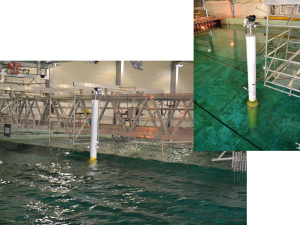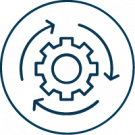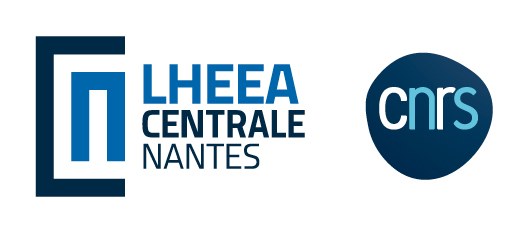Background
Experimental modeling of floating wind turbine in a basin requires several challenges in order to accurately represent the influence of the rotor induced load on the entire structure.
It is in this context that the FANWIN project funded under the WEAMEC Call on Material in 2019 targets the acquisition of propulsion system for experimental modeling of floating wind turbine via a propulsion system for models of marine energy systems tested in the wave basin.
Scientific advances and innovation
Over the last ten years, different experimental approaches have been developed allowing an increasingly more refined representation of the aerodynamic behavior of wind turbines. The most recent developments are aimed at
developing an approach combining numerical simulations and physical tests. These approaches, called “software-in-the-loop”, “hardware-in-the-loop” or “hybrid”, have as their principle the emulation the response of the rotor by an actuator system placed at the top of the tower. The aerodynamic forces are simulated numerically and are communicated to the actuator. In response, sensors placed on the model inform the numerical model in terms of motion and speed of the nacelle.
In 2017, the LHEEA obtained a funding from the WEAMEC Research call for the SOFTWIND project. This 3-year project aims to develop an experimental testbench based on a hybrid approach. A first testbench composed of an emulator with a single actuator/force transducer was tested on the ground at the end of 2018 and at the beginning of 2019.

Fig 1 :The SOFTWIND experimental set up composed of the 1 degree rotor emulation system mounted at the top of a spar-type floating substructure during validation tests of rotor control laws.
The experimental campaign showed very satisfactory results. This emulation is nevertheless limited to the thrust force alone.
In order to emulate all the components of the force, it is necessary to add new actuators to carry out the tests in the wave tank, a pack of battery is required.
The FANWIN project aims to finance these elements in order to allow the development of a more performant testbench.
Expected technical and economic impact
From an economic point of view, the Central Nantes test platform will offer developers an innovative tool for validating control-command laws during tank tests. This new tool will complement the diagnostic tools already associated with testing means and will allow LHEEA to offer new services. We will be able to respond to more test requests and participate in new collaborative projects.
Key project milestones
- October 2019 - Acquisition of the material




